Lighted Screen Technology: Comparing LED, LCD and OLED Options for Optimal Visual Display
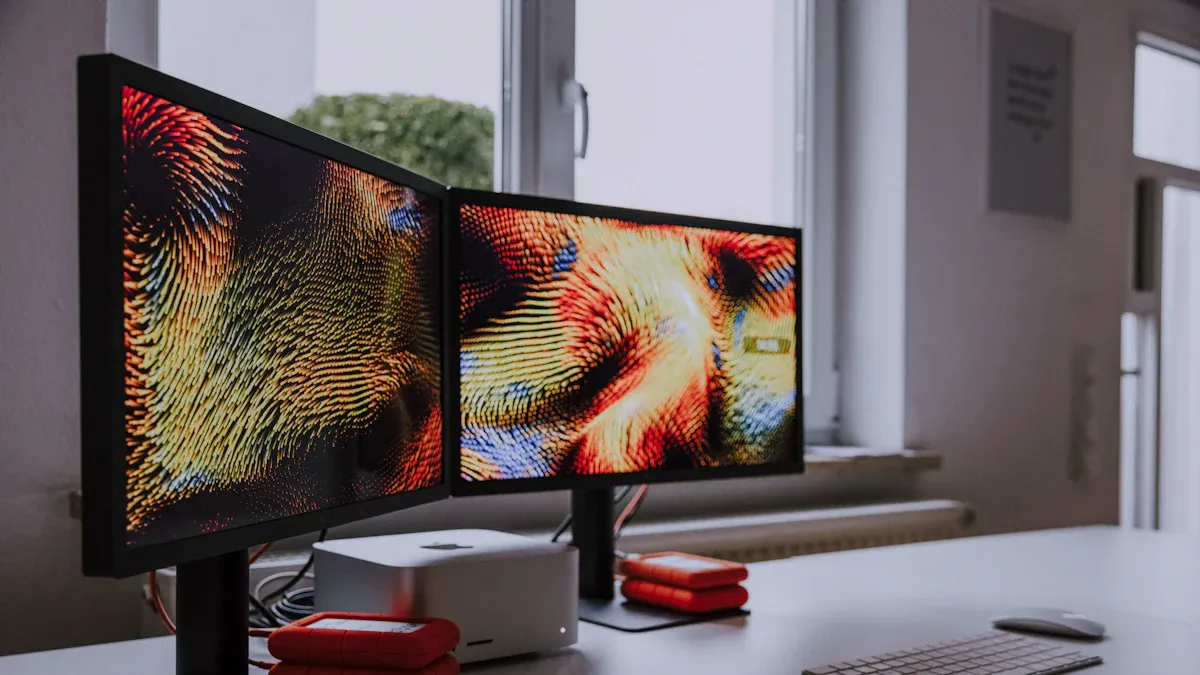
Choosing the right lighted screen can be hard. You want the best picture, but what you care about is important. Some people want to save energy. Others want better colors or strong contrast. Let’s see what makes each display special.
Good color and brightness are very important.
Factor | Why It Matters |
|---|---|
Image Quality | Sharpness and contrast change how you see things. |
Energy Efficiency | Saves power and keeps your device from getting hot. |
Cost | Affects your money and how happy you are with it. |
Durability | Lasts longer so you do not replace it often. |
Viewing Angles | Lets you see clear pictures from any spot. |
Lighted screen technology is not the same for everyone. The best display for you depends on what you want most.
Key Takeaways
Pick the best screen for what you need. Think about things like how good the picture looks, how much energy it uses, and the price.
OLED displays have the best picture. They show deep blacks and bright colors. They are great for watching movies and playing games.
LED and LCD screens work well in bright rooms. They are good for daily use and usually cost less.
Think about where you will put your screen. Choose the right display for your space to get the best results.
Always look for things like HDR support and refresh rates. These features can make watching better.
Lighted Screen Technology Overview
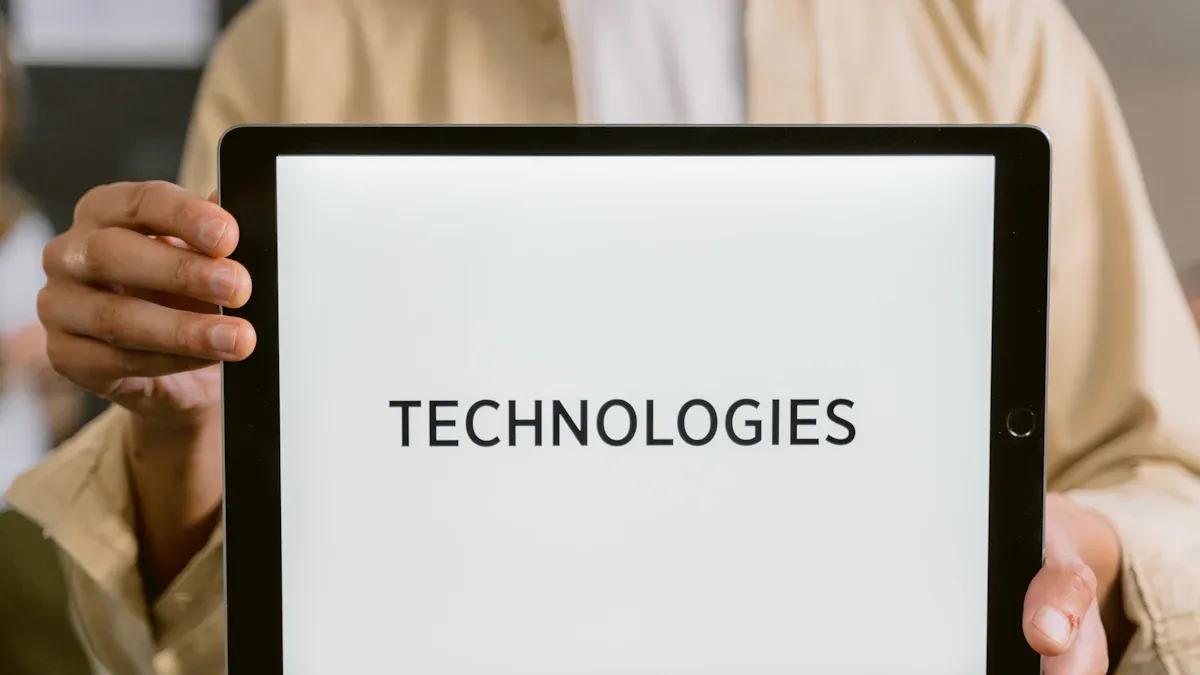
You see screens everywhere—on TVs, phones, laptops, and even watches. These screens use lighted screen technology to show you bright, colorful images. Knowing how each type works helps you pick the right one for your needs.
LED Basics
LED stands for light-emitting diode. You find this technology in many modern screens. An LED uses tiny diodes to create light. These diodes sit behind or around the screen and shine through layers to make the picture you see. Many people like LED screens because they offer great brightness and last a long time. Mini-led is a newer version that uses even smaller diodes, giving you better control over brightness and contrast. Mini-led screens can look amazing in bright rooms.
Technology | Illumination Method | Key Characteristics |
|---|---|---|
LED | Uses light-emitting diodes to emit light | Excellent color accuracy, longer lifespan, better brightness |
Mini-LED | Uses smaller, more densely packed LEDs | Improved contrast, higher brightness, thinner panels |
You get strong color accuracy and a bright picture with LED and mini-led screens. These screens work well for most people.
LCD Basics
LCD stands for liquid crystal display. This type of screen uses a backlight to shine through layers of liquid crystals. The crystals twist and turn to let light through and create images. Every lcd display has several layers, including polarizers, glass, and color filters. The backlight is key for lcd screens. Without it, you would not see anything.
Advantages of lcd:
More natural-looking colors.
Lower power use.
Disadvantages of lcd:
Lower contrast because of the backlight.
Colors can shift when you look from the side.
Mini-led backlights can make an lcd display even better by boosting contrast and brightness. You see lcd displays in many TVs, monitors, and laptops.
OLED Basics
OLED stands for organic light-emitting diode. Each pixel in an oled display makes its own light. You do not need a backlight. This self-lighting feature lets oled screens show true blacks and amazing contrast. You get deep colors and fast refresh rates. Oled displays also look great from any angle.
Each pixel lights up on its own.
You see perfect blacks and bright colors.
Oled displays have fast response times, which is great for games and movies.
The organic light-emitting diode layer in an oled display gives you a thin, flexible screen. Mini-led is not used in oled displays, but you still get top-notch picture quality. Oled displays work best in dark rooms and for people who want the best image.
Tip: If you want the deepest blacks and the richest colors, oled displays are hard to beat.
Best Option
It Depends on Needs
You might wonder, “Which screen is the best?” The truth is, there’s no single winner for everyone. Your best choice depends on what you care about most. Do you want the sharpest picture? Are you looking for a screen that works well in a bright room? Maybe you want something that fits your budget.
If you love gaming, you probably want a screen with fast response times and deep blacks. OLED screens shine here. They give you smooth motion and rich colors, especially in dark rooms. For professional work, like graphic design or video editing, color accuracy matters a lot. OLED displays offer top-notch color, but high-end LCDs are also great because they last longer and don’t have burn-in problems. If you just want a screen for everyday use or you need something for a bright office, LCD and LED screens are reliable and often cost less.
For watching movies and TV shows, OLED screens make colors pop and blacks look deep. If you spend hours working or gaming, you might want an LCD or LED screen because they handle long use better and stay bright in any light. If you care most about saving money, LCD screens usually cost the least.
Tip: Think about where you’ll use your screen and what you’ll do most. Your needs should guide your choice.
Quick Recommendations
You don’t have to guess which screen fits you best. Here’s a quick guide to help you decide:
Best for picture quality: Go for a 4K OLED monitor or TV. You’ll see sharp details and amazing colors.
Best for gaming: Try a 27-inch OLED or fast-refresh LED monitor. You’ll get smooth action and clear images.
Best for work and play: A 27-inch high-end LCD monitor gives you good color and lasts a long time.
Best for bright rooms: Choose an LED or mini-LED screen. These stay bright even with sunlight in the room.
Best for your wallet: Pick a 24-inch LCD monitor. It’s affordable and works well for most tasks.
Best for multitasking: An ultrawide LCD monitor lets you see more at once.
Best for small spaces: A 24-inch monitor fits almost anywhere.
Best for travel: A portable monitor is light and easy to carry.
Here’s a table to compare some popular monitor types:
Model | Brightness (nits) | Screen Size (inches) | Resolution | Refresh Rate (Hz) | Panel Type |
|---|---|---|---|---|---|
Monitor A | 1200 | 27 | 2560 x 1440 | 144 | IPS |
Monitor B | 1000 | 32 | 3840 x 2160 | 60 | VA |
Monitor C | 800 | 24 | 1920 x 1080 | 75 | TN |
Monitor D | 1500 | 34 | 3440 x 1440 | 120 | IPS |
Monitor E | 900 | 27 | 2560 x 1440 | 165 | AMOLED |
You can also see how these monitors compare in brightness:
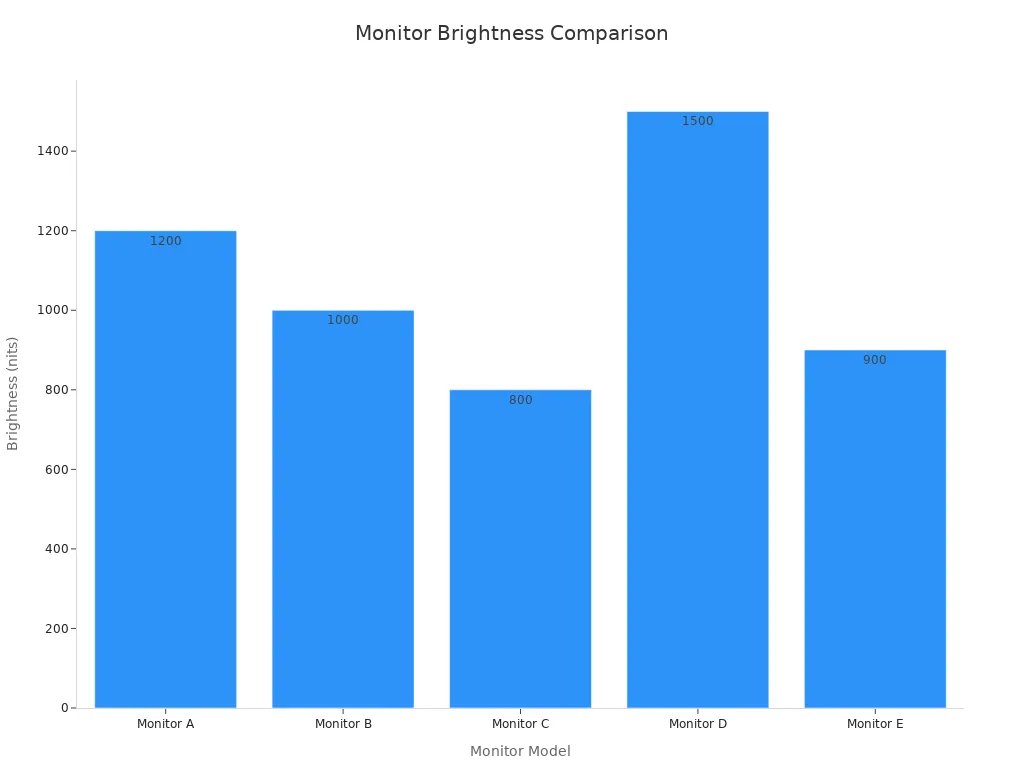
Note: Higher brightness helps if you use your screen in a sunny room. Lower brightness works well in darker spaces.
No matter what you pick, matching your screen to your needs will help you get the most out of your device. Take a moment to think about what matters most to you—picture quality, speed, price, or size. That way, you’ll find the best screen for your life.
TV and Display Comparison
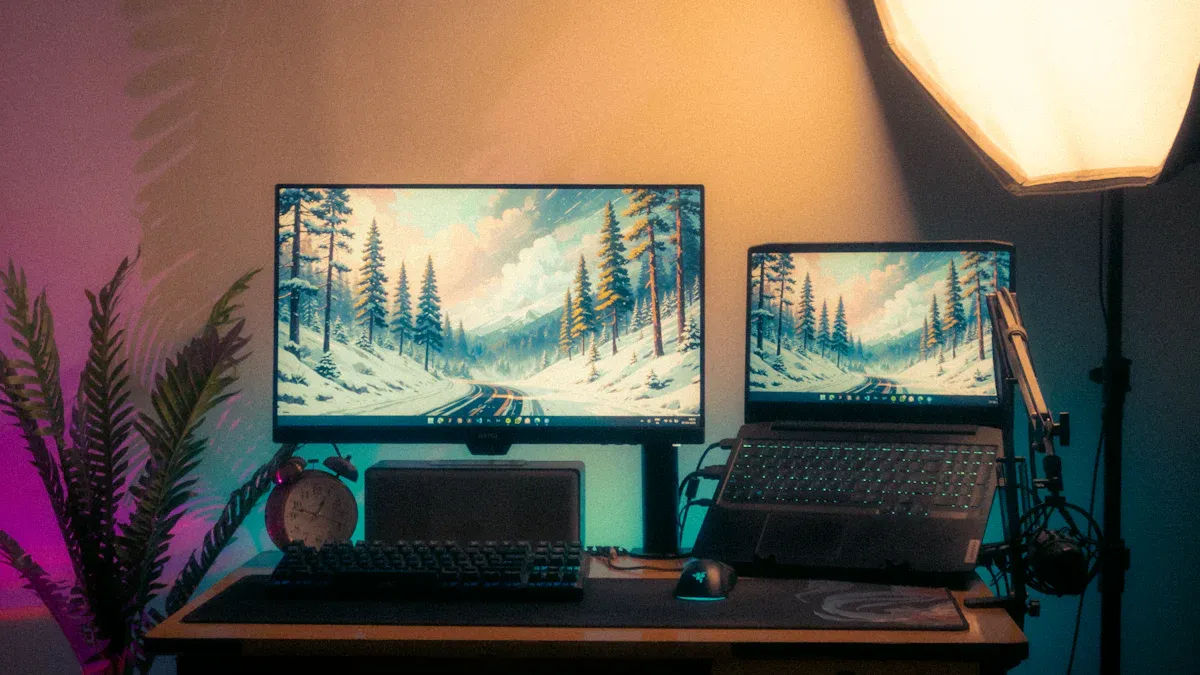
Picture Quality
When you look for a new tv, you want the best picture quality. You notice sharp details, rich colors, and deep black levels. OLED displays stand out here. Each pixel lights up on its own, so you see true blacks and a high contrast ratio. LED displays also give you bright images, but sometimes you spot a halo effect around bright objects. LCD displays offer good quality for less money, but you may see less color saturation and lower contrast ratio.
Here’s a quick look at how these displays compare:
Display Type | Advantages | Limitations |
|---|---|---|
LCD | Lower cost, mature technology, low power consumption | Limited contrast and color saturation, limited viewing angles |
LED | Higher brightness, better color performance, energy-efficient | Higher cost, potential halo effect with local dimming |
OLED | True blacks, high contrast, fast response times | Higher manufacturing costs, risk of burn-in, shorter lifespan |
If you want the best picture quality for movies or gaming, OLED displays are hard to beat. LED tv models work well in bright rooms and offer strong HDR support. LCD displays are great if you want a budget-friendly tv with decent resolution.
Color Accuracy
Color accuracy matters when you watch tv shows, play games, or edit photos. You want colors to look real and vibrant. OLED displays usually show the most accurate colors, especially in high-end models. LED displays also perform well, especially in premium led tv sets. LCD displays can show natural colors, but sometimes skin tones or blues look off.
Check out this chart comparing color accuracy scores for different displays:
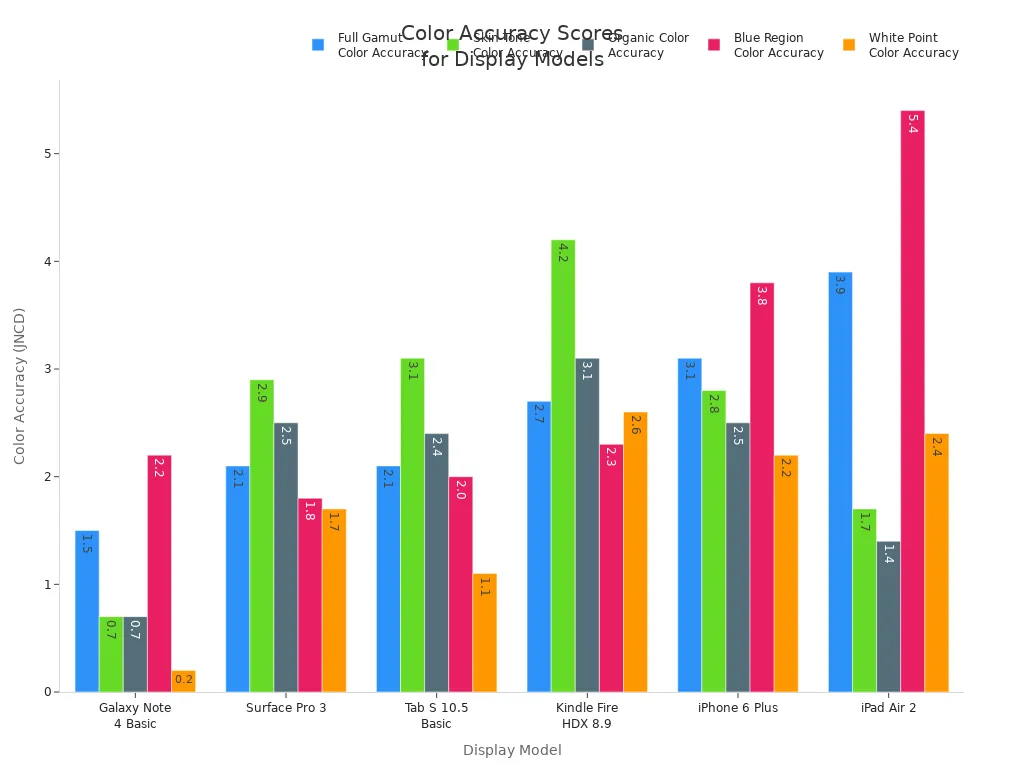
You see that OLED displays and top led displays score better in most categories. If you care about color for your tv, look for models with good HDR and high resolution.
Contrast
Contrast makes bright scenes pop and dark scenes look deep. OLED displays win here. They reach an infinite contrast ratio because pixels turn off completely for deep black levels. QLED tv models improve contrast over regular led tv screens, but they still cannot match OLED displays. LCD displays have lower contrast ratio because the backlight always shines a little, so blacks look gray.
If you want to watch movies with lots of dark scenes, OLED displays give you the deepest black levels and the highest contrast ratio. QLED tv screens are better than standard led tv models, but OLED displays set the bar for contrast.
Brightness
Brightness helps you see your tv clearly in sunny rooms. LED displays and QLED tv screens shine brightest, making them perfect for daytime viewing. OLED displays reach about 540 nits, which works well in most rooms but may look dim in direct sunlight. LCD displays vary, but many models do not get as bright as led displays.
Here’s a table showing maximum brightness:
Display Technology | Maximum Brightness (nits) |
|---|---|
OLED | ~540 |
QD Displays | Up to 2,000 |
LCD | N/A |
If you want a tv for a bright living room, pick a led tv or qled model. These displays handle HDR content and high resolution better in daylight.
Viewing Angles
You want everyone in the room to see the tv clearly, even from the side. OLED displays offer wide viewing angles, up to 178°, so colors and brightness stay the same. LED displays and lcd displays can lose brightness and shift colors when you move off-center. QLED screens improve this a bit, but OLED displays still lead.
Here’s how viewing angles compare:
Screen Type | Typical Viewing Angle | User Experience Impact |
|---|---|---|
LED | Limited (varies by panel type) | Brightness loss and color shifts at angles |
LCD | Moderate (varies by panel type) | Clarity issues from off-center views |
OLED | Wide (up to 178°) | Consistent brightness and color across angles |
If you have a big family or host movie nights, OLED displays make sure everyone gets the best view.
Energy Efficiency
Saving energy helps your wallet and the planet. OLED displays use less power with dark images because pixels turn off. LCD displays work best with bright content, using less energy for documents or web browsing. LED displays offer steady power use and often include local dimming to save energy.
Here’s a quick guide:
Display Type | Energy Efficiency | Best Use Case |
|---|---|---|
OLED | More efficient with dark images | Dark content, videos |
LCD | More efficient with bright content | Bright themes, documents |
LED | Steady power consumption | General use, local dimming features |
If you watch lots of movies or play games with dark scenes, OLED displays help you save energy. For work or browsing, lcd displays and led displays are smart choices.
Lifespan
You want your tv to last for years. LCD displays usually last between 30,000 and 60,000 hours. OLED displays can last from 20,000 to 100,000 hours, but their lifespan depends on how you use them. LED displays often match lcd displays in durability, especially in newer models.
Display Type | |
|---|---|
OLED | 20,000 to 100,000 |
LCD | 30,000 to 60,000 |
LED | N/A |
If you use your tv every day, lcd displays and led tv models are reliable. OLED displays last a long time, but you should avoid leaving static images on the screen for hours.
Burn-In Risk
Burn-in happens when a static image leaves a mark on your screen. OLED displays have a higher risk, especially if you watch news channels or play games with fixed HUDs. Heat management helps reduce burn-in, and new compensation algorithms restore brightness to faded pixels. QD-OLED and WOLED displays use better materials to lower burn-in risk. Manufacturers add firmware and hardware tricks to fight burn-in.
Compensation algorithms fix faded pixels.
QD-OLED and WOLED displays lower burn-in risk.
Firmware and hardware updates help prevent burn-in.
LED displays and lcd displays rarely have burn-in problems. If you worry about burn-in, pick a led tv or lcd displays for peace of mind.
Price
Price matters when you shop for a new tv. LCD displays cost less and offer good resolution for most people. LED tv models cost more, but you get better brightness and HDR support. OLED displays and qled tv screens cost the most because of their advanced technology and picture quality.
If you want the best quality and deep black levels, OLED displays are worth the price. For a balance of cost and performance, led tv and lcd displays are smart picks. QLED tv models sit between led tv and OLED displays in price and quality.
Tip: Decide what matters most—picture quality, brightness, resolution, or price. You’ll find a tv that fits your needs and budget.
User Needs
Gaming
If you love gaming, you want a screen that reacts fast. You need low input lag and quick response times. These features help you see every move right when it happens. OLED and high-end LED screens often give you the best gaming experience. They show smooth action and bright colors. Here’s a quick look at what matters most for gaming:
Factor | Importance for Gaming |
|---|---|
Input Lag | Delay between screen and commands; crucial for fluidity |
Response Time | Speed at which pixels change; affects visual clarity |
Recommendation | New gaming displays offer low input lag and quick response times |
Tip: If you play fast-paced games, look for a monitor with a high refresh rate and low input lag. You’ll notice the difference right away.
Professional Use
When you work with photos, videos, or design, you need a screen that shows true colors and sharp details. IPS panels are a top pick for professionals. They give you wide viewing angles and great color accuracy. Here’s what to look for:
Feature | Description | Importance for Professionals |
|---|---|---|
Resolution | Number of pixels (e.g., 1920x1080, 3840x2160) | Sharper images and more workspace for detailed work |
Refresh Rate | How often the display updates per second (Hz) | Smoother visuals, important for video editing |
Response Time | Time for a pixel to change color (ms) | Less motion blur, better for editing precision |
Color Accuracy | How true colors look (Delta E, color gamut) | Essential for design and editing |
Panel Type | TN, VA, IPS (IPS is best for color and angles) | IPS panels give the best color accuracy and viewing angles |
Note: If you edit photos or videos, choose a display with high resolution and strong color accuracy.
Entertainment
You want movies and shows to look amazing. OLED screens give you deep blacks and rich colors. They make dark scenes in thrillers and sci-fi movies stand out. LED and LCD screens also work well, especially in bright rooms. Here’s what you get with each:
OLED displays show richer colors and deeper blacks.
They handle dark scenes better, perfect for movie nights.
High refresh rates and low input lag help if you play games, too.
Budget Choices
You can find great screens without spending a lot. Some models give you good color and sharp images for less money. Here are a few options:
HP 24mh 23.8-Inch Display: Under $200, IPS screen, slim bezels, strong sRGB color.
ViewSonic Omni VX2728J-2K: Around $200, great for budget gamers.
Samsung 24-Inch CF396 Curved LED: Curved design, vivid display, immersive feel.
Tip: Budget screens may not have all the top features, but they still give you a solid viewing experience.
Choosing Display Technology
Match to Needs
You want a screen that fits your life. Start by thinking about where and how you will use your display. Each technology has its own strengths. Here’s a simple table to help you match your needs to the right display:
Display Technology | Advantages | Limitations | Best Use Cases |
|---|---|---|---|
LCD | Cost-effective, easy to connect to devices | Not as bright, less durable for heavy use | Computer monitors, TVs, small rooms |
OLED | Super thin, amazing contrast and colors | Costs more, not as bright outside | High-end home theaters, bedrooms, creative work |
LED | Very bright, reliable for long hours | Fewer size options, not best for indoors | Outdoor signs, big events, digital billboards |
If you want a budget-friendly screen for your desk, LCD works well. For movie nights or creative projects, OLED gives you the best picture. Need a display for a bright space or outdoor use? LED is your go-to.
Tip: Always think about your room, lighting, and what you watch or do most. The right match makes a big difference.
Final Tips
You want to avoid common mistakes when picking your next screen. Here are some smart tips to help you choose wisely:
Think about your room size and how far you sit from the screen—not just the screen size.
Pick the right resolution. Full HD is fine for small screens, but 4K looks better on bigger ones.
Look for HDR support. It makes colors and details pop.
Choose a higher refresh rate if you love sports or gaming.
Make sure your TV or monitor has the apps and features you use most.
Don’t buy the biggest screen if it won’t fit your space.
Check real picture quality, not just what ads say.
Think about the total cost, including features and remote quality.
Look for HDMI 2.1 ports if you want to connect new devices.
Plan for better sound, since built-in speakers are often weak.
Take your time. Measure your space and seating before you buy.
Make sure your TV gets regular updates to avoid future problems.
📝 Remember: The best display is the one that fits your needs, your space, and your budget.
You’ve seen how OLED, LCD, and LED screens each offer something special. Check out this quick table to help you compare:
Feature | OLED Displays | LCD Displays |
|---|---|---|
Picture Quality | Deep blacks, vibrant colors | Good, less contrast |
Cost | Higher | More affordable |
Longevity | Burn-in risk | Longer lifespan |
Best Use Cases | Movies, creative work | Office, bright rooms |
Energy Efficiency | Saves more energy over time | Cheaper to run |
When you pick a screen, think about what matters most to you:
Want the best colors? Go for OLED.
Need a lower price or longer life? LCD might fit.
Care about energy use? Compare ratings and size.
Don’t forget to check warranty options and consider recycling when you upgrade. Your perfect display depends on your needs—so take a moment and choose what works best for you! 😊
FAQ
What is the main difference between LED, LCD, and OLED screens?
You see the biggest difference in how each screen lights up. LCD and LED screens use a backlight. OLED screens light up each pixel on its own. This gives OLED better contrast and deeper blacks.
Can OLED screens get burn-in?
Yes, OLED screens can get burn-in if you leave the same image on for a long time. You can avoid this by changing what you watch and using screen savers.
Which screen type is best for bright rooms?
LED and mini-LED screens work best in bright rooms. They get very bright and fight glare. OLED screens look great in dark rooms but may seem dim in direct sunlight.
Do I need a 4K screen for gaming or movies?
You do not need 4K, but it helps. 4K screens show sharper details and make games and movies look better. If you want the best picture, go for 4K.
See Also
Exploring Various Technologies for Digital Signage Displays
Understanding The Fundamentals Of LED Display Technology
Choosing The Ideal LED Display: Size, Brightness, And Resolution
LED Displays For Digital Signage: Uses, Advantages, And Tech

